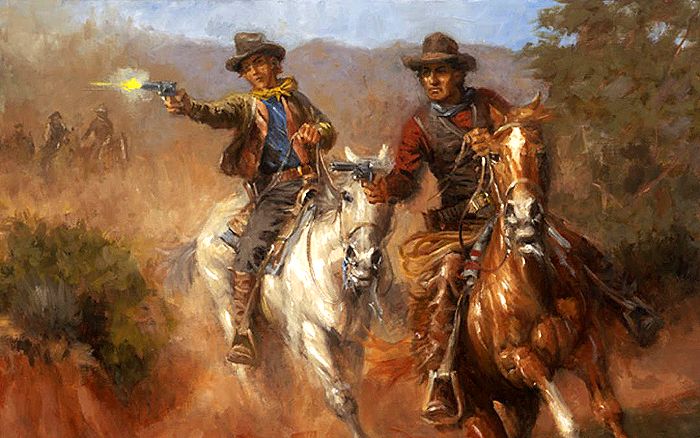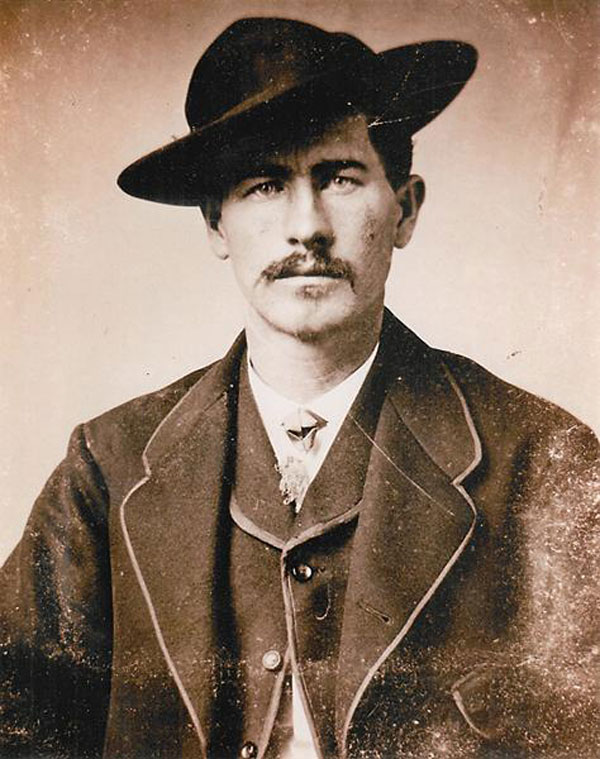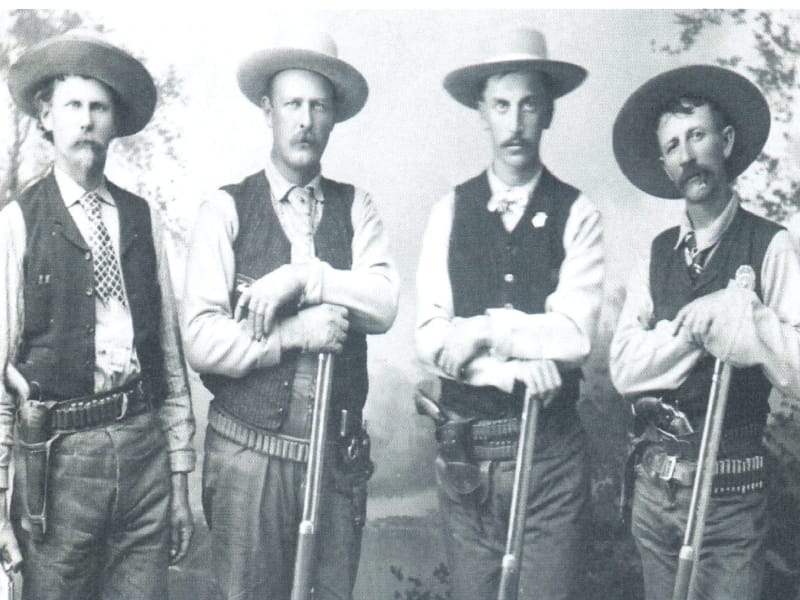
Steel and Shadow: The Prolific Gunslingers Who Forged the Myth of the American West
The very phrase "Old West gunslinger" conjures an iconic image: a steely-eyed figure, hand hovering over a Colt .45, standing alone on a dusty street under a blazing sun. It’s a tableau etched into the global consciousness, a potent blend of courage, lawlessness, and a brutal code of honour. Yet, beneath the layers of dime-novel romance and Hollywood sheen lies a complex reality. The prolific gunslingers of the American West were not merely figures of myth; they were products of a raw, evolving frontier, men (and occasionally women) whose lives were often short, violent, and inextricably linked to the rapid, often chaotic, expansion of a nation.
These weren’t just men who carried guns; they were individuals whose reputations preceded them, whose skill with a firearm was acknowledged, feared, and often exaggerated. Their prolificacy wasn’t always measured in sheer body count, though many claimed a chilling number of victims. More often, it was about their willingness to use their weapon, their capacity to instill fear, and their ability to survive the frequent deadly encounters that characterized the frontier. They were outlaws, lawmen, gamblers, cowboys, and drifters – all forged in the crucible of a land where law was often absent, and personal justice was swift and lethal.
The period following the American Civil War, roughly from 1865 to 1890, saw an explosion of westward migration. With it came cattle drives, mining booms, railroad expansion, and the rapid establishment of towns that often outpaced any form of established government. This vacuum of authority created the perfect breeding ground for violence. Ex-Confederate guerrillas, displaced soldiers, opportunistic criminals, and desperate settlers all converged, armed with the latest repeating firearms and a frontier mentality that prized self-reliance above all else.

The Outlaws: Shadows of the Frontier
Among the most famous and prolific were the outlaws, men who lived by their own rules and often left a trail of bodies in their wake. Their motivations varied: some were driven by revenge, others by greed, and a few by a twisted sense of justice.
Perhaps no name evokes the image of the young, defiant outlaw more than Billy the Kid. Born Henry McCarty (or William H. Bonney), he was barely out of his teens when he became deeply embroiled in the bloody Lincoln County War in New Mexico. While his actual body count is debated—he famously claimed to have killed 21 men, "not counting Indians and Mexicans"—his reputation for quick thinking, loyalty to his friends, and an almost supernatural ability to escape made him a legend in his own short lifetime. His eventual pursuit and killing by Sheriff Pat Garrett cemented his place in history, a symbol of youthful rebellion against the encroaching order. Garrett himself noted the Kid’s "coolness, his nerve, his dash, and his utter recklessness." These were the traits that made him prolific not just in killing, but in creating a legend.
Then there was John Wesley Hardin, a man whose prolificacy was truly chilling. Born a preacher’s son in Texas, Hardin claimed to have killed his first man at age 15 and went on to claim anywhere from 27 to over 40 victims, often with little remorse. He was a master of the "border roll," a trick that allowed him to draw a pistol seemingly out of nowhere. Hardin was a complex character: a gambler, a lawyer, a family man, and a cold-blooded killer who saw himself as a victim of circumstance. His autobiography, though self-serving, provides a stark look into the mind of a man who believed he was always justified in his actions. He once famously remarked, "I never killed a man who didn’t need killing." His prolificacy was less about quickdraw duels and more about ambushes, feuds, and a general disregard for human life that marked him as one of the West’s deadliest figures.
And of course, the James-Younger Gang, led by Jesse James. While perhaps more famous for their audacious bank and train robberies, Jesse James and his brother Frank were also highly proficient with firearms, having cut their teeth as Confederate guerrillas under "Bloody Bill" Anderson during the Civil War. Their prolificacy stemmed from their willingness to shoot anyone who stood in their way during a robbery, and their ruthless pursuit of vengeance against those they perceived as enemies. Jesse, in particular, became a folk hero, a Robin Hood figure to some, despite the trail of dead civilians and lawmen he left behind. His death by assassination at the hands of Robert Ford only cemented his legendary status.
The Lawmen and Regulators: Walking the Line
Not all prolific gunslingers were outlaws. Many were lawmen, or men who operated on the ambiguous line between law and lawlessness, using their proficiency with a gun to enforce a crude form of order. Their "kills" were often deemed justifiable, but the frequency and brutality of their actions were no less impactful.
Wild Bill Hickok stands as the quintessential gunslinger-turned-lawman. Tall, handsome, and impeccably dressed, Hickok was a scout, gambler, and marshal whose reputation for deadly accuracy and unflappable courage was legendary even in his own time. His most famous shootout was the 1865 duel with Davis Tutt in Springfield, Missouri, a rare instance of a true, face-to-face quickdraw in the West, which Hickok won decisively. As a marshal in Hays City and Abilene, Kansas, he was known for his swift and often lethal administration of justice. He was a showman, too, and carefully cultivated his image, but his prowess with a pistol was undeniable. His death, shot in the back while playing poker in Deadwood, South Dakota, holding what became known as the "Dead Man’s Hand" (aces and eights), only added to his mystique.

Then there was Wyatt Earp, perhaps the most famous lawman of the West, though his prolificacy with a gun was often more strategic than spontaneous. Earp was a gambler, saloon keeper, and deputy marshal who moved from one boomtown to another, always seemingly drawn to conflict. His most iconic moment, the Gunfight at the O.K. Corral in Tombstone, Arizona, saw him and his brothers, along with Doc Holliday, engage in a brief but brutal shootout with the Clanton and McLaury factions. While Earp himself only claimed one life that day, the aftermath saw him embark on a bloody "Vendetta Ride," systematically hunting down and killing those he believed responsible for his brother Morgan’s death. Earp’s prolificacy was less about rapid-fire kills and more about his unwavering resolve to eliminate those who challenged his authority, making him a formidable and feared presence.
Bat Masterson shared a similar trajectory with Earp. A buffalo hunter, scout, and professional gambler, Masterson served as sheriff of Ford County, Kansas, and later as a deputy marshal in Dodge City. He was known for his calm demeanor and exceptional marksmanship. Unlike some of his contemporaries, Masterson often preferred to use his reputation and a well-aimed warning shot to defuse situations, but he was undeniably lethal when provoked. His later career as a respected sportswriter in New York City showcased his intelligence and adaptability, a testament to how some gunslingers managed to transition from the violent frontier to a more settled life.
The Drifters and Professionals: Guns for Hire, or for Survival
Beyond the strict categories of outlaw and lawman were the drifters, professional gamblers, and hired guns whose prolificacy stemmed from their constant immersion in dangerous environments and their readiness to use violence for survival or profit.
Doc Holliday, the consumptive dentist from Georgia, is perhaps the most famous example. A highly intelligent but deeply troubled man, Holliday found himself drawn to the gambling halls and saloons of the West, where his quick temper and even quicker draw made him a feared figure. He was fiercely loyal to Wyatt Earp, and his participation in the O.K. Corral gunfight cemented his legend. Despite his debilitating tuberculosis, Holliday was involved in numerous shootouts and altercations, his gun often acting as an extension of his sharp wit and cynical outlook. He embodied the intellectual yet deadly aspect of the gunslinger, a man who seemed to court death with a sardonic grin.
Then there was Clay Allison, a cattle rancher from Texas who was infamous for his unpredictable and often brutal violence. A Confederate veteran, Allison was known for his explosive temper and a willingness to fight anyone, anywhere. He was involved in numerous shootouts and feuds, often emerging victorious, and his reputation for sheer recklessness made him one of the most feared men on the frontier. He once famously rode into Dodge City, wearing his pistols backward, simply to prove he wasn’t afraid of its formidable lawmen. Allison’s prolificacy was born from a volatile personality and an environment that offered little restraint.
The Reality of the Shootout: Debunking the Myth
It’s crucial to distinguish between the romanticized image of the gunslinger and the brutal reality. Hollywood has given us the clean, dramatic quickdraw, two men facing off at high noon in the middle of a deserted street. The truth was far messier. Most gunfights were sudden, chaotic, and often took place at close quarters, in crowded saloons, or through ambushes.
Accuracy, while important, was often less than perfect, especially with early, bulky revolvers. The famous Colt .45 Single Action Army, or "Peacemaker," required manual cocking before each shot, making rapid fire difficult. Most lethal encounters involved a few shots at close range, often with the element of surprise. There was little honour in these fights; survival was the primary objective. As one historian noted, "The average gunfight was more akin to a street brawl that involved firearms than a graceful duel." The "prolific" nature of these men often came from their sheer number of encounters, not necessarily from a clean, single shot every time.
Moreover, the line between self-defense and murder was often blurred. Lawmen were often given wide latitude to use lethal force, and in a land where courts were distant and justice slow, many took matters into their own hands. The prolific gunslingers were those who consistently emerged from these bloody encounters alive, their reputations growing with each confrontation, whether justified or not.
The Enduring Legacy
The era of the prolific gunslinger began to wane with the close of the 19th century. As the frontier closed, law enforcement became more established, and the rough-and-tumble boomtowns gave way to settled communities. The telegraph, railroads, and professional police forces made it harder for outlaws to escape and for vigilante justice to prevail.
Yet, their legend endures. The prolific gunslingers of the West—from the ruthless John Wesley Hardin to the charismatic Wild Bill Hickok, the defiant Billy the Kid to the calculating Wyatt Earp—became foundational figures in the American mythos. They represent a primal struggle between order and chaos, individual liberty and societal constraint. Their stories, amplified by dime novels, sensationalist newspapers, and later by Hollywood, created an enduring archetype: the skilled individual who navigates a dangerous world with courage, cunning, and a deadly hand.
They were a unique product of a unique time and place, men whose lives were lived on the edge of a rapidly expanding nation. Their prolificacy, whether in killing, surviving, or simply generating fear and awe, helped to define a pivotal chapter in American history, forever casting a long, complex shadow of steel and legend across the landscape of the Old West.

